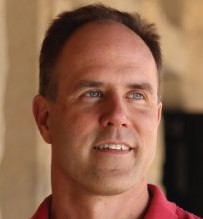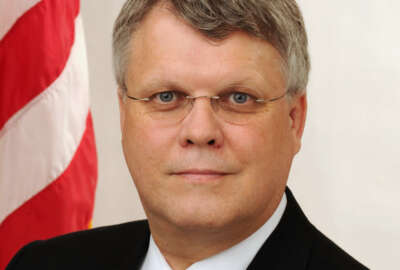HHS, DoT making the buzz around innovation a reality
Through HHS’ Entrepreneur-in Residence program and Transportation’s chief innovation officer, these agencies are among the few that are committing resources and...
The Transportation Department and the Department of Health and Human Services are taking the buzz out of innovation.
While many agencies and companies talk about how they are becoming more innovative in how they work and address mission areas, DoT and HHS actually are experiencing the transformation.
Transportation hired a chief innovation officer, Chris Gerdes, a professor from Stanford University, for a one-year stint.

HHS set up an Entrepreneur-in Residence program to attract experts from in and out of government to work on specific projects.
Both approaches are part of a growing recognition across government that innovation must start from within and spread organically from successes.
“This year is something of a prototype. What I’m trying to do is to figure out how best to utilize that role and leave a playbook for following chief innovation officers,” said Gerdes after he spoke at the Smart. Safe. Connected. Shaping the Future of Transportation event sponsored by Booz Allen Hamilton during the opening of its new Innovation Center in Washington.
Gerdes said his role has three aspects, including fostering innovation in the culture of DoT.
“DoT has a phenomenal number of really innovative people, and trying to shine a spotlight on them and give them the support that they need to really make a difference is part of the role,” he said. “The second is to look at the barriers to innovation. What are the things that prevent us from harnessing all the capabilities in our organization and how do we reduce those. And the third is looking outside. In transportation, there is an awful lot of good innovation going on in the private sector and in other government agencies that can really foster DoT’s mission so what can we do to really enhance that and make sure the future transportation system develops in a way that really serves all the people.”
This idea of fostering the culture of innovation throughout the agency is exactly the focus at HHS as well.
Julie Schneider, the program director of the Entrepreneur-in-Residence program, said over the last four years HHS has brought in 21 entrepreneurs from the private sector to work with 53 intrapreneurs, career federal employees who came to the program seeking help.
“The program has two major goals. The first is to help internal teams test out new approaches to complete some of these challenging projects. They really are in a situation where they have a project, they have an idea, they maybe want to do it in a different way, and they know they are missing a critical skillset on their team,” Schneider said in an interview with Federal News Radio. “So we hope by bringing these entrepreneurs in to help them will help them do that.”
She said a second goal is to create a lasting effect of how to be innovative that then can be shared across the department. The EIR program is located within HHS’s IdeaLab.
Schneider said former HHS chief technology officer Todd Park came up with this idea of an entrepreneur-in-residence program in 2012 because of the challenges around IT modernization, data science and process improvement.
Transportation saw a similar need for someone to help unlock the potential innovation across the department.
Similar to the HHS program, Gerdes also is focusing on workshops and training on innovation tools and idea generation to help expand the concept of innovation across DoT.
“My workshops come with a warranty. I’ve told people if they want help in implementing these and using these ideas in your job, give me a call. People have and I’ve gotten engaged on a variety of topics across the modes,” Gerdes said.
One of Gerdes efforts is with the National Highway Traffic Safety Administration, which is looking at the safe implementation of automated vehicles.
He helped NHTSA to work on deployment guidelines and the roles of federal, state and local governments in overseeing and managing automated vehicles.
“One of the things that people often say when I talked to them is ‘I used to feel like I was more creative when I was a kid but I’m not just that creative now.’ I don’t think that’s actually true. As our brains develop, we become very good at seeing particular patterns,” he said. “So what it really requires to develop new ideas is to think in a different manner, to get outside of the usual patterns. There are a few ways of doing this, a few ways of listening to other people or just reframing problems or questions to get a different perspective. So one of the things I’ve been doing is trying to coach people through some of those techniques to look at problems a little bit differently and get a few insights.”
He said it doesn’t take much to get federal employees to think differently when you are dealing with passionate and intelligent people.
At HHS, Schneider said the EIR program is attracting a lot of interest because employees also realize the potential of getting outside assistance to look at problems differently.
“We really look for three major things. First, we want to know it’s an important project and potentially very impactful. Second of all, we want to know that the internal team is really missing an skillset, they know what the skillset is and they know how this person will fit into their team. And then finally, we really look at the internal team to make sure that they are a group of creative problem solvers that are really genuinely looking for new ideas because we want these folks to come in and push the envelope a little bit,” she said. “We know there is going to be tension, but at the core we want to know the internal team is ready for that and excited for that.”

Schneider said EIR recently placed entrepreneurs in the Food and Drug Administration and the Centers for Disease Control and Prevention, and are looking to hire experts for projects at the Centers for Medicare and Medicaid Services and the HHS Office of Civil Rights.
The Office of Civil Rights is looking for a process improvement expert to help them improve its system that takes in customer complaints. Schneider said the office receives about 24,000 complaints each year and they need to figure out how best to resolve the complaints more quickly.
Over at CMS, Schneider said the entrepreneur will help the project figure out how best to lower the barriers for smaller IT companies to bid on state Medicaid contracts.
“Currently there are a relatively small number of larger companies that tend to do this type of work. But CMS knows there are a lot of really exciting technologies and ideas out there within smaller companies,” she said. “So they want someone to come in and help them understand what are the pain points for those types of companies and design a system moving forward where they can encourage more of these small players to come into this space.”
Schneider said HHS recruits these outside experts several different ways, including chief technology officer Susannah Fox and former CTO Park doing personal outreach, the EIR alumni network recommending new candidates and through social media.
She said HHS uses Schedule A hiring authority to bring on these experts in 30-to-60 days.
“Most of have stayed at least for their year, and one measure of success we use for the program, about half are asked to stay longer,” Schneider said. “We’re really focused on the quality of the projects and the quality of the results. So some of the ways we think about success is did we solve the problem in a new way, did we do something that wasn’t business as usual? Another thing we look at is customer satisfaction. I go to them on a monthly or quarterly basis to get their input on how the project is going.”
Gerdes said one measure of success at Transportation is how well he can build network or community of practice around innovation.
“Innovation is somewhat of an overused buzzword these days to be perfectly honest, but it’s a very real concept. It’s the idea of coming up with unique solutions to difficult problems and the role that government faces is challenging because the public expects some unique solutions. So I think there is definitely a role for a chief innovation officer,” he said. “Sometimes creativity is a lot of hard work. It’s not just being clever, but it really is having the diligence and the determination to keep going until you can reach new solutions and bring them into practice. One of the key aspects of innovation is if it’s going to be important, it needs to be part of the job.”
Copyright © 2025 Federal News Network. All rights reserved. This website is not intended for users located within the European Economic Area.
Jason Miller is executive editor of Federal News Network and directs news coverage on the people, policy and programs of the federal government.
Follow @jmillerWFED
Related Stories






